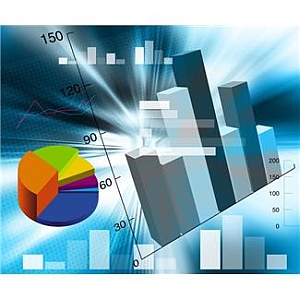5 Standard Types of Project Management Reports

Reporting is an essential element of the project management process. Different project management reports help decision-makers to keep the work-to-be-done on track and to audit expenses, timelines and milestones. In this blog, we’ll be looking at the five most common types of project management reports and how they can help your team perform better.
Wondering what these reports are? No worries, we’ve got you covered! But first let’s define what a project report means.
What is a Project Report?
A project [management] report is a formal document that shows the status of a project at any given point in time, gives information on what’s been happening in there, and makes recommendations for improvements or changes to the stakeholders.
Project reports can be a simple as a brief email to your management or as formal as a business case presentation to the steering committee. Your choice of report format and approach depends on the situation and the document management rules in your organization.
Common Types of Project Reports
There are five standard types of report in project management, as follows below:
- Project status report
- Project risk and issues log
- Project procurement report
- Project financial report
- Project performance reports
Each one provides different information to help you keep your well-defined project running in excellent shape.
1. Project Status Report
It is a summary of the project’s current status and highlights the key achievements and challenges the team deals with. Status reports are short documents, sometimes only one or two pages long. They provide an overview of where your project is at a given point in time, what problems have been identified to date, and what solutions are being explored.
Status reports are a great tool for keeping management up-to-date about the activity under way on your project. This type of report is used when you want to report on the status of work, rather than a particular project deliverable. This can be either a milestone, or a stage in your project’s life-cycle.
It’s important to prepare a clear summary of the key constraints (Scope, Time, Costs, Quality) that allow the management team to make well-balanced decisions based on the information presented in the report.
Using simple language and figures, highlight key milestones and accomplishments. Indicate any problems you or other team members may have faced and how these issues were resolved.
2. Risk and Issue Log
This is a documentation of all the risks and issues that can arise and have arisen during the project as well as areas that need improvement. Risk logs are usually made up of risk categories, probability and impacts. You can also put in examples of your project’s risk response strategies.
The purpose of a risk log is to be able to identify which risks were greater than others. It is more of a manual than a report and its purpose is to track the project problems. This can be achieved by writing down each issue on its own page. The next step is to group these pages into categories, and cross-reference them with other reporting documents from the project, such as risks logs or issue lists.
In most projects, issues are unexpected events that occur during the project’s progress over time. You can conclude that most of the issues will be addressed and even solved by the people who experience them.
Issues are not always a bad thing. Some issues may be considered as “minor” ones, as they are easily solved, but others may not be so simple to resolve.
So how should you manage them? How should you document your project’s risk and issues? In order to keep good reporting of all the risk management events in one place, you need to prepare a comprehensive list of all project risks.
It’s a good practice to divide the list of risks into categories and then document them. A risks log should contain descriptions of the issues and their probable causes, along with time when they will arise, the impact they have on project deliverables, what corrective actions have been taken to prevent or reduce risk to acceptable levels, and an estimated likelihood that the risk will occur.
3. Project Procurement Report
This type of report is used in projects that apply resources from outside your in-house team onto part of your project. A project procurement report contains information about the services or goods that will be provided to fulfill a task of your project.
In the procurement report you need to identify the suppliers, their contact details, and the proposed deliverables. Ordering materials from an outside vendor is a good way to get faster results and reduce your internal project team’s workload.
For this report type, you will want to clearly outline the procurement strategy and process you plan to use to get your resources and materials, so that your team can easily find what they’re looking for. Review how each of the goods or services fits into your project and how they will be used. Normally, you write these procurement reports in the same way you would prepare a project contract.
4. Project Financial Report
The purpose of this report is to summarize all the financial data that contributes to your project. You can also include both projected figures and actual figures for cost, budget, and timeline. These reports are usually prepared monthly or quarterly for senior management and finance teams in your organization.
In order to create a financial report, you first need to prepare the cost accounts for your project. Prepare a detailed bill of materials for each project deliverable. The purpose of this document is to add all the costs of individual items for each deliverable. This will include all the costs of materials, labor fees, and company expenses for delivering your project.
The financial report aims to show the financial status of your project and to highlight its progress over time. It also provides an overview of your current cash flow from project expenses. This helps the team and management to focus on their next few months’ budget. This can help them balance their costs and spendings with what they have to invest in the project.
5. Project Communication Report
This type of report is created to follow the progress of your project communication. It reviews communication management and how the channels used to communicate with suppliers, partners and other stakeholders are satisfactory.
This report also focuses on how well your groups are communicating with each other, and how good their stakeholder relations are. It should include information about the types of messages sent, the frequency and length of messages produced or received, and which methods you use to convey your project information.
The purpose of this report is to make sure that all the team members are on the same page and that your project communication strategy is strong. You can use it to find ways to improve communication among your team, and to determine which areas you need to improve. It can also give suggestions for revising your communication plan.
Other Types of Project Management Reports
In addition to the reports covered in this section, there may be other types of project reports that are required by your organization. Some of these include:
- Due Diligence. This type of audit report is used to verify that a potential supplier has the necessary credentials and resources to deliver the goods or services you need for your project. Some companies require a due diligence report prior to signing a contract with their new vendor. The due diligence report comes after an initial evaluation done by management of your potential supplier, but before signing the final contract with them.
- Board/Executive Reports. Most organizations require a project report to be submitted by the Project Manager on a monthly or weekly basis. The type of report depends on the scope of the project and can even vary from organization to organization.
- Cost-Benefit Analysis Report. This type of project financial report is required by auditors to have the information reported to them more frequently than once a year. It goes over the value of the project and provides an overview of the project’s financial status.
- Variance Reports. A variance report is a write-up that shows the difference between the actual result of your project and your planned result. A project manager must prepare this report to show the reason that there has been a variance in the results of your project (learn more: activity variance in project management).
- Gap Analysis Report. Also called a “Gap Report” or “Gap Analysis,” this type of status report is the responsibility of the project manager, who has to find the gap between your planned and actual results.













